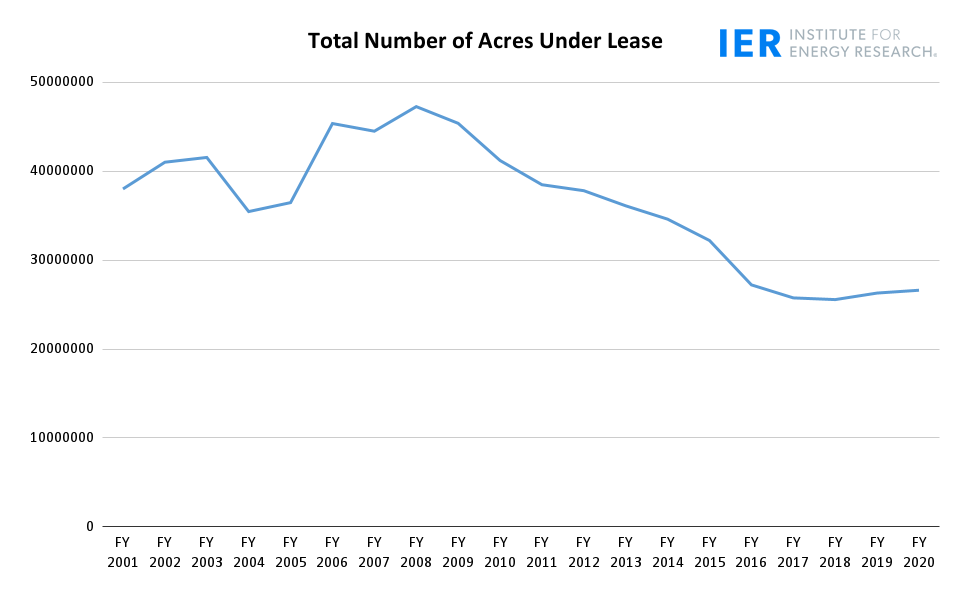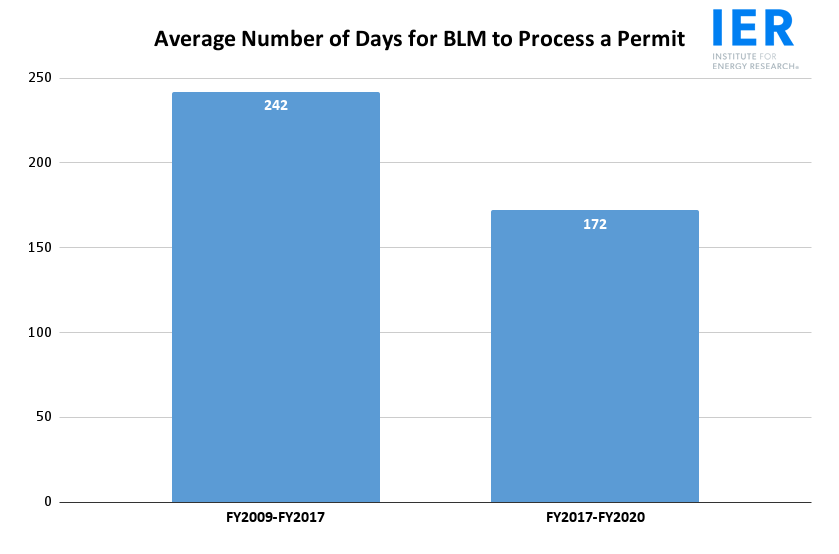On Friday, November 26, the day after Thanksgiving, Biden’s Department of Interior released its much delayed report on its review of the Federal oil and gas program, focusing on leasing and permitting practices. The report suggested charging oil and gas companies more money to drill in the United States for oil and natural gas—resources that are owned by the country’s citizens and used to heat homes, generate low emission electricity and for transportation fuels that benefit the country’s residents. The higher costs suggested by Biden’s Interior Department will translate into higher prices for gasoline and diesel because higher royalty rates would result in less bids and more oil imports from OPEC, who will again control the price of oil. Despite what President Biden says, his actions indicate that he wants higher prices for gasoline and natural gas to expedite his transition to non-carbon sources of electricity and electric vehicles—not withstanding that currently over 60 percent of the electricity in this country is generated by fossil fuels. By increasing natural gas costs, carbon dioxide emissions from electricity generation may also increase because of fuel switching to less expensive coal. Biden’s hypocrisy seems to have no end!
According to the report, “the review found a Federal oil and gas program that fails to provide a fair return to taxpayers, even before factoring in the resulting climate-related costs that must be borne by taxpayers; inadequately accounts for environmental harms to lands, waters, and other resources; fosters speculation by oil and gas companies to the detriment of competition and American consumers; extends leasing into low potential lands that may have competing higher value uses; and leaves communities out of important conversations about how they want their public lands and waters managed.” It is on all counts a report of deception.
The Interior Department’s report makes a number of specific recommendations, including adjusting royalty and bonding rates, prioritizing leasing in areas with known resource potential, and avoiding leasing that conflicts with recreation, wildlife habitat, conservation, and historical and cultural resources, all of which are consistent with pending partisan congressional proposals.
The Interior report was released one week after the House Democrats passed the Build Back Better bill that contains a long list of increases in federal royalties and fees, plus new fees, new taxes, and barriers to leasing in the Arctic National Wildlife Refuge, the Pacific, Atlantic, and eastern Gulf of Mexico. If revenues were the issue, they would not have banned leases in these areas. The arbitrary new fees would add millions of dollars in operating costs, pricing out U.S. production. The bill restricts access to resources owned by Americans and advances Biden’s priorities including an ‘import-more-oil’ strategy.
Background
The federal mineral estate contains 2.46 billion acres, made up of 1.76 billion acres in the Outer Continental Shelf and 700 million of onshore lands. The state and private land mineral estate is around 1.5 billion acres by comparison. Yet the vast majority of our oil and natural gas comes from private and state lands. That indicates that there are problems with the Federal process of leasing, fees, royalties and regulations if much more oil and gas is being produced from much less land despite higher royalties on private and state lands. The following will point out some of the issues that need to be fixed, which are different from those recommended in the Department of Interior report.
Biden’s oil and gas leasing and permitting policies are reminiscent of those of the Obama administration. Looking at data from the Obama administration, the share of oil and natural gas production on federal lands dropped significantly from their highs in 2009. The share of crude oil on federal lands dropped to 23.7 percent in 2017 from 35.7 percent in 2009. The share of natural gas production on federal lands dropped to 13 percent in 2017 from 25.2 percent in 2009. Production on federal lands did not recover from Obama administration policies that resulted in a moratorium on offshore energy permitting and long delays in approving drilling permits. In 2019, for example, the share of crude oil on federal lands was 24.9 percent, and in 2020, it was 25.5 percent. For natural gas, the share produced on federal lands was 14.4 percent in 2019 and 13.3 percent in 2020.
Also, very little federal land is actually leased for oil and gas development. In fiscal year 2020, the federal government had under lease 26.6 million acres of land for oil and gas development onshore out of more than 700 million acres of the subsurface the federal government controls. That is, less than 4 percent of federal lands onshore are leased for oil and gas development. Also, the number of acres leased has fallen by 30 percent over the last 20 years. Less land means less energy produced.

When more than 96 percent of federal lands are used currently for other uses such as recreation, 4 percent is just a drop in the bucket. Further, applicable Federal laws such as the Federal Land Policy and Management Act and Outer Continental Shelf Lands Act require energy development on federal lands owned by American citizens for their benefit. More production benefits Americans with lower prices, increased national security and jobs.
As mentioned above, there are long delays in approving Federal permits, despite the fact that the Trump administration was able to cut the processing time down by about 70 days from the time it took during the Obama administration. (See graph below.) In 2020, it took on average 142 days to complete an application for a Permit to Drill on Federal lands. In comparison, in Texas, in 2018 and 2019, it took an average of just two days to process standard drilling permits. The 140-day difference in the permitting time is the reason that Texas has higher royalty rates than the federal government—a 2 day processing time is worth much more to a company than a 142 day processing time. Royalty rates should be lower on Federal lands because Federal laws and bureaucracy makes it far more difficult to operate on federal lands. The level of production from federal lands vs. non-federal lands bears that out.

There are numerous benefits to opening federal lands to oil, gas, and coal development. An IER study shows that opening federal lands and waters to exploration and production would increase federal tax revenue by $24 billion annually in the short run (over seven years) and $126 billion annually thereafter while state and local governments would receive $10 billion in tax revenue over the short run and $61 billion annually thereafter. Over 37 years, federal, state, and local tax revenues would increase to $3.9 trillion in federal revenues and $1.9 trillion in state and local revenues.
Further, the economy would benefit by $127 billion annually over the short and $663 billion annually in the long run. Most impressively, the opening of federal lands could have a cumulative increase in economic activity of up to $20.7 trillion over a period of 37 years. And the ripple effect of that boom would be 552,000 in job gains annually over the short run with annual wage increases of up to $32 billion and an increase of 2.7 million jobs annually in the long run with annual wage increases of $163 billion.
Conclusion
From day 1, President Biden has done all he can to hurt the domestic oil and gas industry, despite his telling the American public the opposite. Biden has restricted America’s energy supply by canceling the Keystone XL pipeline and prohibited new leases on federal lands, increasing the average price of a gallon of gasoline to $3.40—over a dollar more than when he took office. A lease sale was held recently only because the court indicated that he did not have the authority to cancel the sales since they are required by Congressional legislation. He has also restricted federal lands in Alaska (ANWR and the Naval Petroleum Reserve-Alaska) from lease sales and operations, despite Congressional legislative approval.
Biden’s anti-oil and gas policies have made the United States lose its oil independence achieved under President Trump and placed the nation at the mercy of OPEC. OPEC now has the upper hand in setting oil prices because the cartel controls the excess oil production capacity. Biden’s response has not been to increase domestic supplies, but rather, to beg OPEC and others for more supplies and to tap into emergency supplies in our Strategic Petroleum Reserve.
But Biden is causing gasoline prices to go even higher with the release of this Department of Interior report on the Federal oil and gas program. The report suggests charging companies even more money to drill in the United States for oil and natural gas by raising royalty rates and other fees, which the House Build Back Better bill also does. Biden’s plan is to raise oil and gas prices, which will prop up his so-called “green” energy program to transition to zero carbon emitting technologies by 2050.



